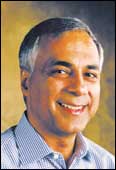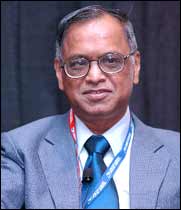
Established telecoms companies are fighting an increasingly bitter battle against innovative attackers “WE'RE not a telephone company anymore; I sort of resent that,” says Lea Ann Champion, an executive at SBC, America's second-largest “Baby Bell”. “We're a communications and entertainment company.” Well, maybe. Ms Champion is in charge of “lightspeed”, an SBC project to deliver TV, movies and other entertainment to customers via hugely enhanced broadband connections using internet protocol—a service known in short as IPTV. Lightspeed, which will cost $4 billion, has hit technological and legal snags recently that could slow its roll-out, scheduled to begin at the end of this year. But sooner or later IPTV will happen, if only because telecoms companies all over the world are betting on it. And when it does it will be controversial.
That is because IPTV forms part of a larger, and quite desperate, defensive strategy now being adopted by telecoms firms against fierce attacks on multiple fronts. On one front are cable giants, such as America's Comcast, which are luring customers with an enticing “triple-play bundle” of TV, broadband and telephony services. On a second front are mobile-phone operators, which young customers in particular are increasingly using to “cut the cord” from their fixed-line company.
But arguably most dangerous of all is the third front, where traditional telecoms firms are under attack from voice-over-internet-protocol (VOIP) providers, which use the internet to carry conversations that would previously have taken place via a conventional phone. TeleGeography, a research firm, estimates that the number of subscribers to VOIP services such as Vonage, which lets users plug their traditional phones into a gadget connected to the internet, will grow from 1.8m at the start of this year to 4m by the end of December in America alone; by 2010, it projects over 17m American subscribers. This does not count the world's largest VOIP provider, Skype, which uses a small and simple software application to let users make free calls between computers—so far, it has been downloaded 141m times.
Full








